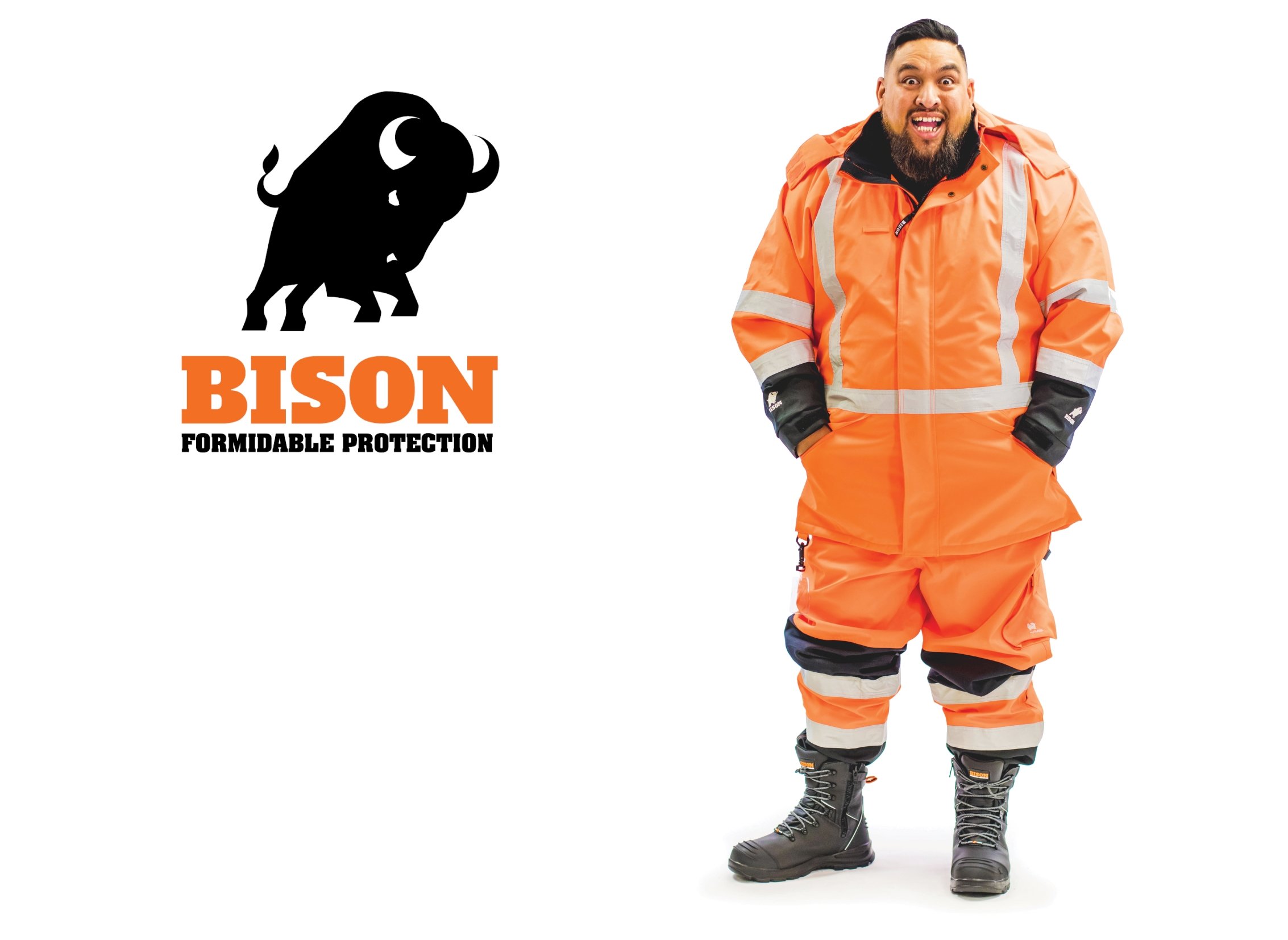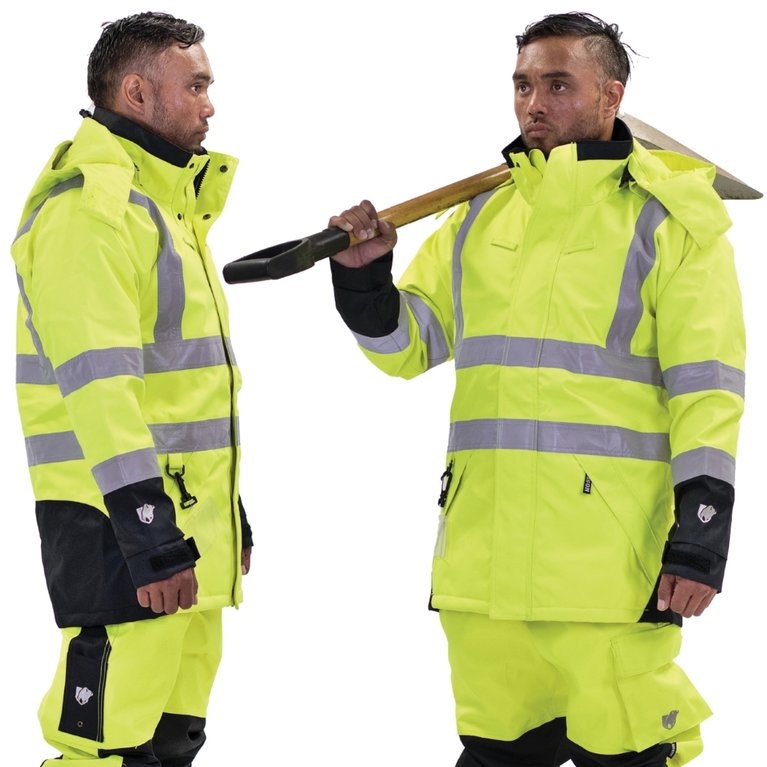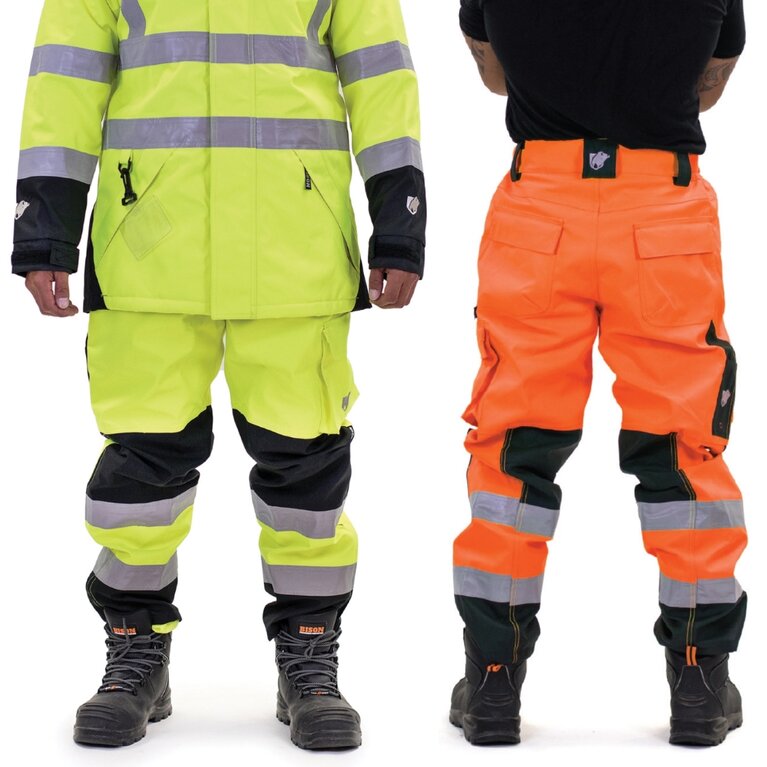Not sure where to start with Winter garments?
Throughout the winter months of June, July and August, construction sites and any other business enduring the outdoors in New Zealand needs to do what they can to protect workers in cold temperatures.
While you can advise workers to wear multiple layers and pack hand warmers, prolonged exposure to the cold and wet can still slow down productivity and of course, lower moods.
Wrapping up through several garments is often considered enough, staying warm boils down to much more including choice of material, base layers, and suitability for purpose.
From top to bottom, head to toe, here are the workwear essentials to think about this winter which will not only aid productivity but reduce fatigue.
Here is our guide covering the basic components to layering your clothing for warmth and protection from the rain: base, mid and outer layers.
Layer One
Base layers are crucial in helping you to stay dry with the material wicking moisture away from the body, helping to alleviate excess moisture during periods of activity.
Merino thermal underwear is the most common option, but Hollowcore is Polyester is a high tech tetra (four) channel fibre that dominates the thermals fabric market in the northern hemisphere. The fabric traps air in the hollow chambers to thermoregulate your body temperature. It also forms a permanent transport system that pulls moisture away from your skin to the outer layer of the fabric to keep you dry.
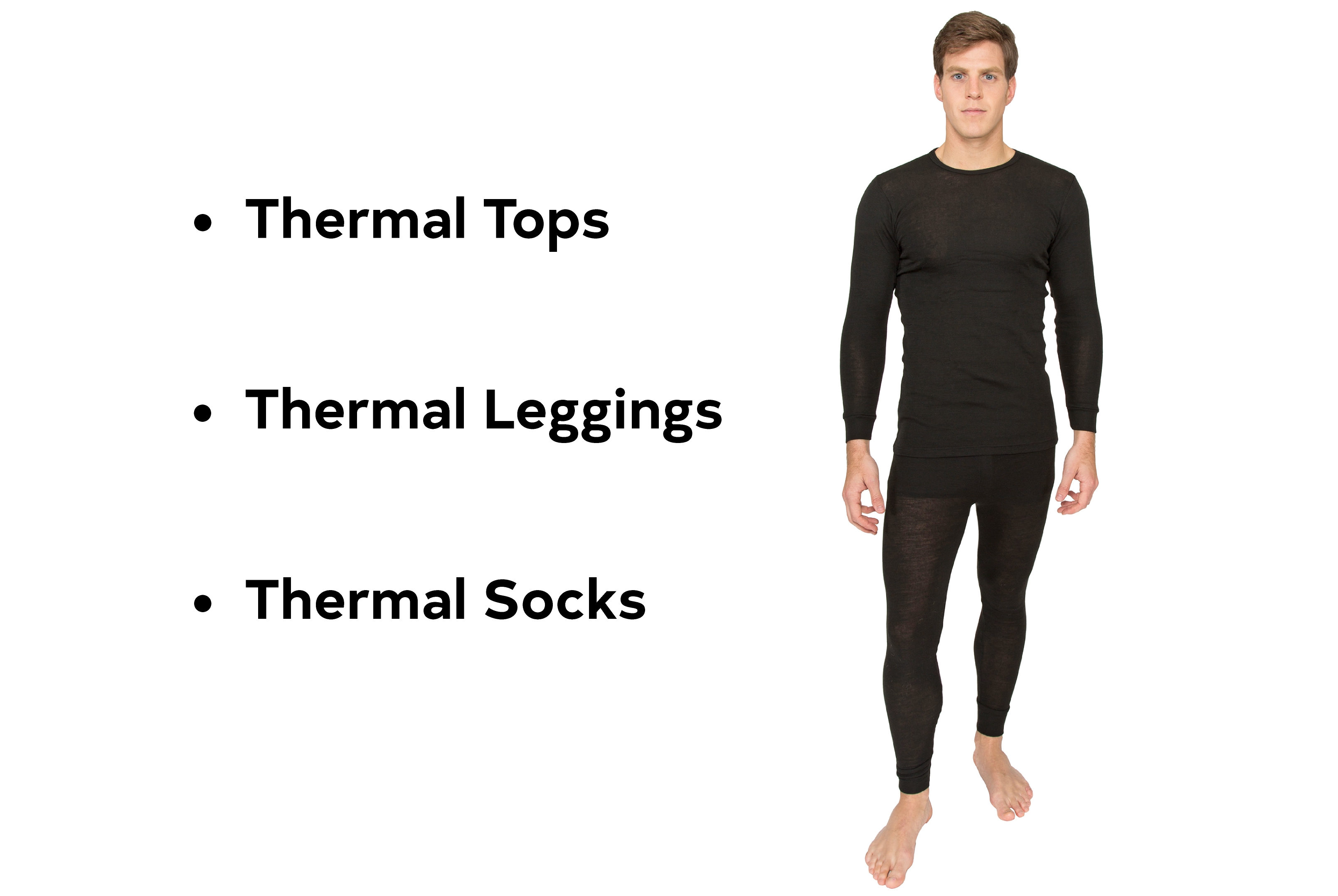
Layer Two
The middle layer (insulating layer): retains body heat to protect you from the cold. Insulating layer helps you retain the heat that’s radiated by your body. The more efficiently this layer traps that heat, the warmer you’ll be.
These layers are typically made up of your summer outerwear in New Zealand. From your allocated Overalls, Polo's/T-Shirts, Shirts and Jumpers/Fleece's.
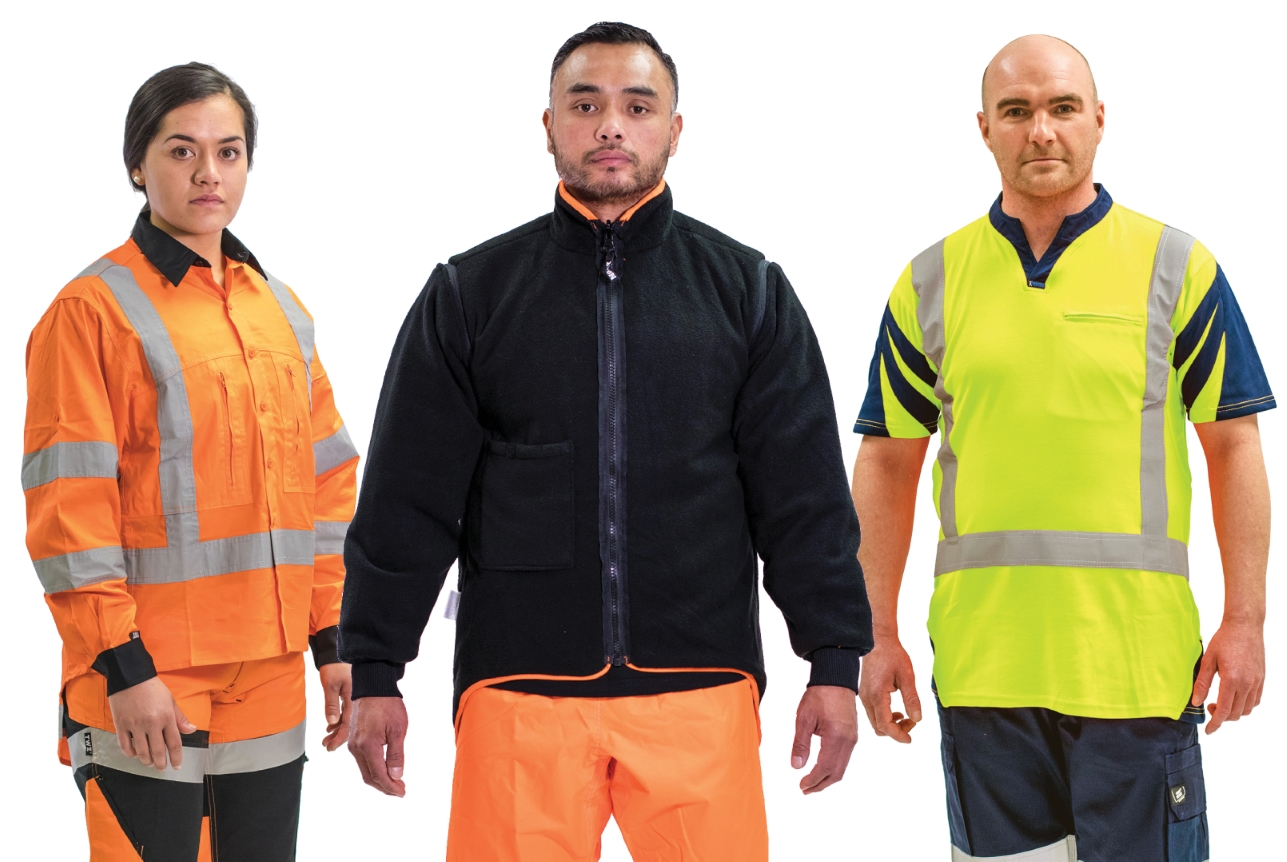
Fleeces:
When it comes to adding the second layer, fleeces and jumpers are essential for workers in need of wind-resistant warmers.
For drivers, warehouse and machine operators, fleeces are often a popular solution thanks to their breathability, tailored fit and thermal layering systems.
When selecting your garment, keep a close eye on the thickness (380gsm being the thickest), hand warmer pockets and high collars.
So what type of Fleeces are there?
Most common is the 100% Polyester.
Normally a heavyweight is 380gsm with the lighter being 280-300gsm.
This option is both exceptionally warm and durable.
The alternative option is a 80% Polyester/20% Cotton (cotton being external to give smooth smarter finish). This is often referred to as Fleecy and maybe less durable.
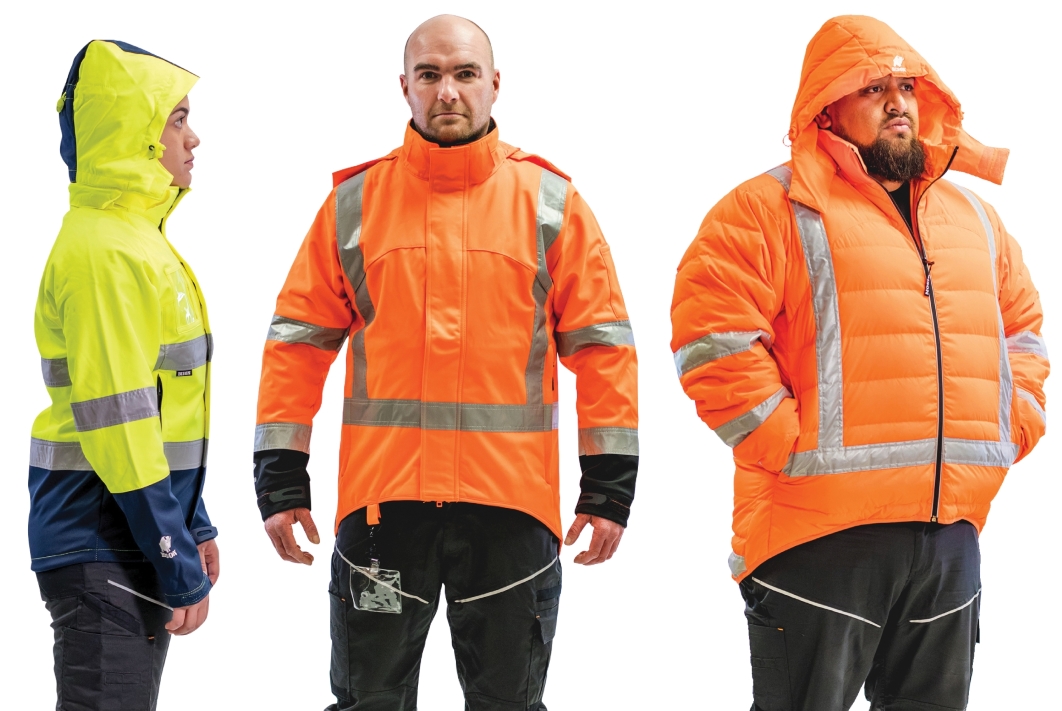
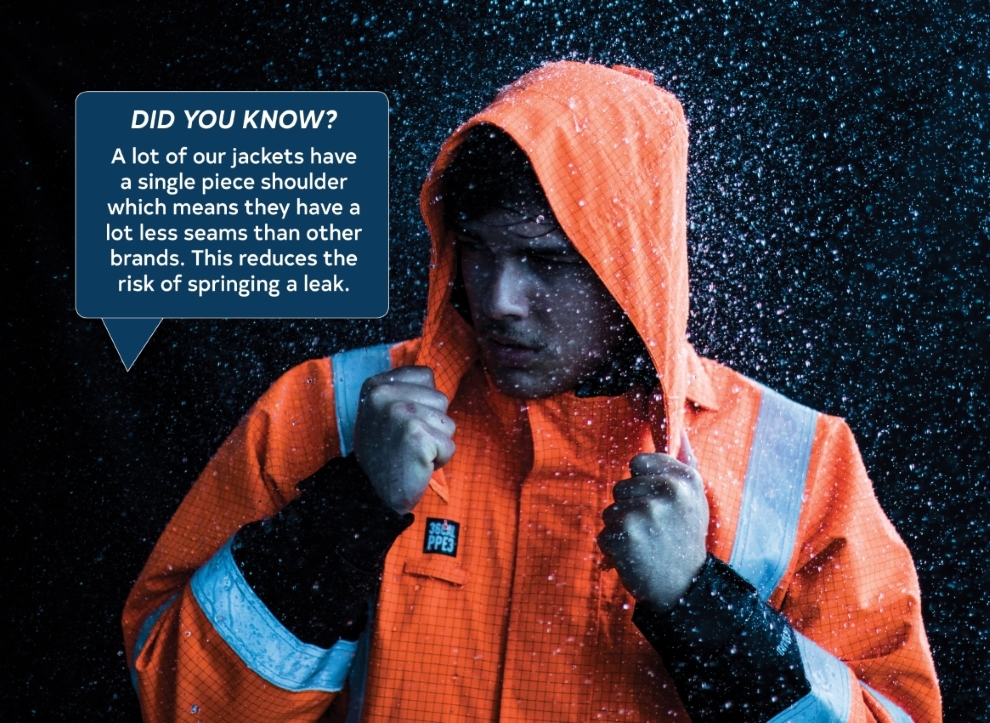
Layer Three
This is often referred to as the outer layer or Shell. The outer layer is your last line of defence and is normally a Jacket.
Jackets:
When it comes to the final layer, jackets are essential for workers in need of wind-resistant & water-resistance while keeping in mind you hi-vis and site-specific safety requirements (FR, ARC etc.).
The Bison Stamina Premium Weight 5-in-1 Is an all-time favourite with its layering options and 16,000mm water rating.
For more severe conditions involving civil work, oil & gas rigs and building sites, for example, workwear decision-makers should look out for features such as storm cuffs with velcro sleeve adjustment, smartphone pocket under storm flap, padded collars and hoods.
So what type of Jacket is best for your team?
Understanding the basics of outerwear helps ensure that when selecting your team's wet weather gear, they have the right clothing for their conditions.
- Stretch PU; This material is highly waterproof with water ratings of 20,000mm+ and lightweight (may be worn in conjunction with fleece underlayers)
- Oxford Polyester; These are breathable with varying water ratings between 12,000mm-20,000mm. This is the most common of rainwear materials and more hard wearing than PU
We asked our General manager for some top tips around high performing safety workwear for the winter months, he said;
It’s a case of considering the product’s functionality and comfort for the end user. It’s critical that safety uniforms are durable and comfortable, so the wearer is protected from the elements, which is vital when working outdoors during the winter. Companies should ensure that all clothing and accessories they provide for their staff complies with AS/NZ safety standards, is fit for purpose and is of a high quality, so it performs time and again.
It’s raining, it’s pouring but I’m wearing Bison Extreme Rainwear so BRING IT!
No worries if the
weather report ain’t looking too flash - we believe in working hard no matter
the weather.
Take the day by storm in the Extreme Rainwear! The no#1 choice for crews who are out in the weather all shift, who need to be seen and stay dry in tough conditions.
We know that working on cold mornings, in the dark, in heavy rain and snow is all part of the job - and we’re here to make it easier. To ENHANCE your work and to PROTECT you from the elements.
No need to take a rain check on crap days, the Extreme Rainwear’s Stratatek fabric with it’s 3 layer technology will protect you for 12 hours in the rain. Layer 1: Super strong 100% Stratatek 600D Textile, Layer 2: Breathable Waterproof Membrane, Layer 3: Tough Knit back to protect the waterproof layer.
Systemseal Technology stops any sneaky leaks coming in through the seams and stitching, the most common part of rainwear to leak. Your shoulder is also one piece so no extra seams there to provide opportunities for water to get in. Easily adjust your Velcro Neoprene storm cuffs - make them fit snug around your wrists to stop any drips travelling up your sleeve.
If the rain manages to get past your zip’s double storm flaps you’ll learn that gutters aren’t just for roads, your zip has one too, keep that water channelling in the right direction and not into your jacket.
The weather can’t
decide what it’s doing? Your Extreme jacket has a zip-off foldaway hood so you
can air out that noggin during dry spells.
Need to keep your phone
on you? You’ve got a stealth mode pocket with a storm flap to keep it hidden,
safe and dry.
If the day is
particularly chilly, there’s a warm Sherpa lining in your jacket but if, once
again, the weather can’t decide what it’s doing just zip it out to cool things
down.
Ate all your lunch at morning smoko? No problems mate, the Argyle Extreme Raintrousers have adjustable waist tabs to give the belly a little slack! Need to buy another feed later on? Your rear and cargo pockets have storm flaps so your wallet will stay nice and dry. Oh and there are pockets for your tools too!
Visibility isn’t too great? Good thing your gear has UltraFlect reflective tape to keep you safe. There’s even a double band of tape on your Extreme Raintrousers for extra visibility… just isn’t ideal if you’re trying to hide from the boss.
And the best part, take off your Argyle Extreme gear after a long day in the rain and you’ll still be dry - winning!
Some of the Argyle Extreme Rainwear Options:
In addition to the three main layers – base, mid (insulation), outer (shell) – there are a few essential accessories & PPE items to complete your getup.
Make sure that you have waterproof, warm gloves, a beanie or balaclava that will keep your head warm under that jacket or hard hat, and some thick socks. You might also consider goggles to improve and protect your vision on the really harsh days.
Accessory layers
Headwear: Beanies make for a popular choice when outdoors, helping to retain heat and keep employees comfortable. A Merino Beanie offers high quality through thin material, meaning they can sit below hard hats and protective helmets. Their use extends outside work also, giving employers further incentive to brand and embroider beanies when in use publicly.
Gloves: In winter, workers require gloves with a dual purpose, able to provide long-lasting warmth and comfort, along with suitability for manual handling and cold conditions. ESKO’s Polar Bear Thermo Winter Gloves are suited to outdoor winter work, coolrooms, construction & logistics and the MKM Possum/Merino Gloves Fingerless are great for indoors. Consider your working environment as grip along with resistance to cuts, oils, chemicals abrasions, burns and punctures and dexterity are all very important.
Search thermal gloves or talk to a consultant for more help.
Socks: Finding a sock that combines working comfort, durability and heat-holding ability is easier than most think with most thermal socks offering reinforced heel and toe, as well as gentle grip. Most popular at CleanlineTasman is our 80% Wool Thermal Work Sock.
Footwear: In winter, footwear must be kept dry in order for your extremities to stay warm. Look at the videos of the Sixton Outdry® boots which are designed specifically for this criteria, helping your feet to stay warm and dry.

Wednesday 26th June 2019


